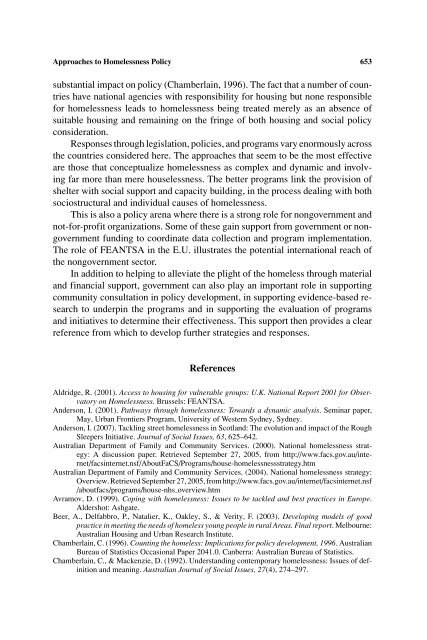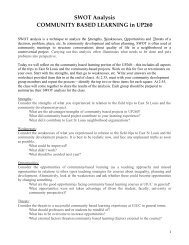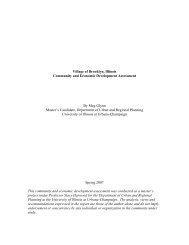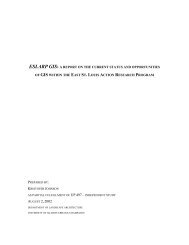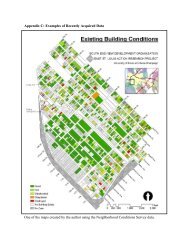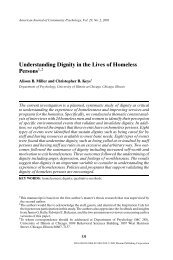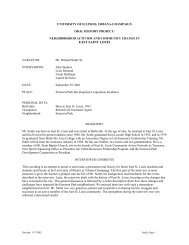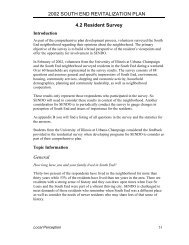Approaches to Homelessness Policy in Europe, the United States ...
Approaches to Homelessness Policy in Europe, the United States ...
Approaches to Homelessness Policy in Europe, the United States ...
You also want an ePaper? Increase the reach of your titles
YUMPU automatically turns print PDFs into web optimized ePapers that Google loves.
<strong>Approaches</strong> <strong>to</strong> <strong>Homelessness</strong> <strong>Policy</strong> 653substantial impact on policy (Chamberla<strong>in</strong>, 1996). The fact that a number of countrieshave national agencies with responsibility for hous<strong>in</strong>g but none responsiblefor homelessness leads <strong>to</strong> homelessness be<strong>in</strong>g treated merely as an absence ofsuitable hous<strong>in</strong>g and rema<strong>in</strong><strong>in</strong>g on <strong>the</strong> fr<strong>in</strong>ge of both hous<strong>in</strong>g and social policyconsideration.Responses through legislation, policies, and programs vary enormously across<strong>the</strong> countries considered here. The approaches that seem <strong>to</strong> be <strong>the</strong> most effectiveare those that conceptualize homelessness as complex and dynamic and <strong>in</strong>volv<strong>in</strong>gfar more than mere houselessness. The better programs l<strong>in</strong>k <strong>the</strong> provision ofshelter with social support and capacity build<strong>in</strong>g, <strong>in</strong> <strong>the</strong> process deal<strong>in</strong>g with bothsociostructural and <strong>in</strong>dividual causes of homelessness.This is also a policy arena where <strong>the</strong>re is a strong role for nongovernment andnot-for-profit organizations. Some of <strong>the</strong>se ga<strong>in</strong> support from government or nongovernmentfund<strong>in</strong>g <strong>to</strong> coord<strong>in</strong>ate data collection and program implementation.The role of FEANTSA <strong>in</strong> <strong>the</strong> E.U. illustrates <strong>the</strong> potential <strong>in</strong>ternational reach of<strong>the</strong> nongovernment sec<strong>to</strong>r.In addition <strong>to</strong> help<strong>in</strong>g <strong>to</strong> alleviate <strong>the</strong> plight of <strong>the</strong> homeless through materialand f<strong>in</strong>ancial support, government can also play an important role <strong>in</strong> support<strong>in</strong>gcommunity consultation <strong>in</strong> policy development, <strong>in</strong> support<strong>in</strong>g evidence-based research<strong>to</strong> underp<strong>in</strong> <strong>the</strong> programs and <strong>in</strong> support<strong>in</strong>g <strong>the</strong> evaluation of programsand <strong>in</strong>itiatives <strong>to</strong> determ<strong>in</strong>e <strong>the</strong>ir effectiveness. This support <strong>the</strong>n provides a clearreference from which <strong>to</strong> develop fur<strong>the</strong>r strategies and responses.ReferencesAldridge, R. (2001). Access <strong>to</strong> hous<strong>in</strong>g for vulnerable groups: U.K. National Report 2001 for Observa<strong>to</strong>ryon <strong>Homelessness</strong>. Brussels: FEANTSA.Anderson, I. (2001). Pathways through homelessness: Towards a dynamic analysis. Sem<strong>in</strong>ar paper,May, Urban Frontiers Program, University of Western Sydney, Sydney.Anderson, I. (2007). Tackl<strong>in</strong>g street homelessness <strong>in</strong> Scotland: The evolution and impact of <strong>the</strong> RoughSleepers Initiative. Journal of Social Issues, 63, 625–642.Australian Department of Family and Community Services. (2000). National homelessness strategy:A discussion paper. Retrieved September 27, 2005, from http://www.facs.gov.au/<strong>in</strong>ternet/facs<strong>in</strong>ternet.nsf/AboutFaCS/Programs/house-homelessnessstrategy.htmAustralian Department of Family and Community Services. (2004). National homelessness strategy:Overview. Retrieved September 27, 2005, from http://www.facs.gov.au/<strong>in</strong>ternet/facs<strong>in</strong>ternet.nsf/aboutfacs/programs/house-nhs overview.htmAvramov, D. (1999). Cop<strong>in</strong>g with homelessness: Issues <strong>to</strong> be tackled and best practices <strong>in</strong> <strong>Europe</strong>.Aldershot: Ashgate.Beer, A., Delfabbro, P., Natalier, K., Oakley, S., & Verity, F. (2003). Develop<strong>in</strong>g models of goodpractice <strong>in</strong> meet<strong>in</strong>g <strong>the</strong> needs of homeless young people <strong>in</strong> rural Areas. F<strong>in</strong>al report. Melbourne:Australian Hous<strong>in</strong>g and Urban Research Institute.Chamberla<strong>in</strong>, C. (1996). Count<strong>in</strong>g <strong>the</strong> homeless: Implications for policy development, 1996. AustralianBureau of Statistics Occasional Paper 2041.0. Canberra: Australian Bureau of Statistics.Chamberla<strong>in</strong>, C., & Mackenzie, D. (1992). Understand<strong>in</strong>g contemporary homelessness: Issues of def<strong>in</strong>itionand mean<strong>in</strong>g. Australian Journal of Social Issues, 27(4), 274–297.


